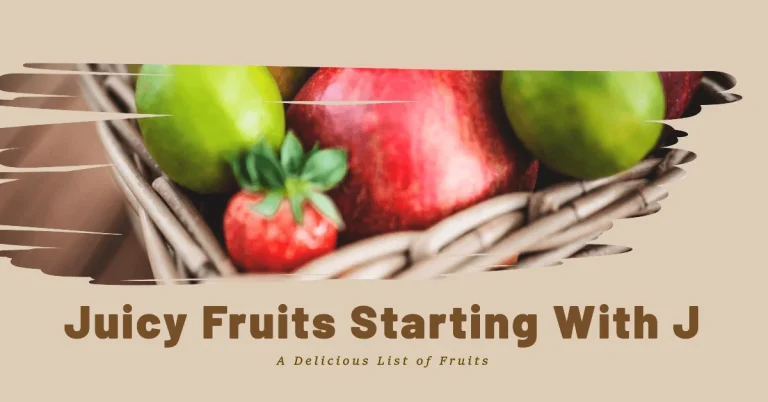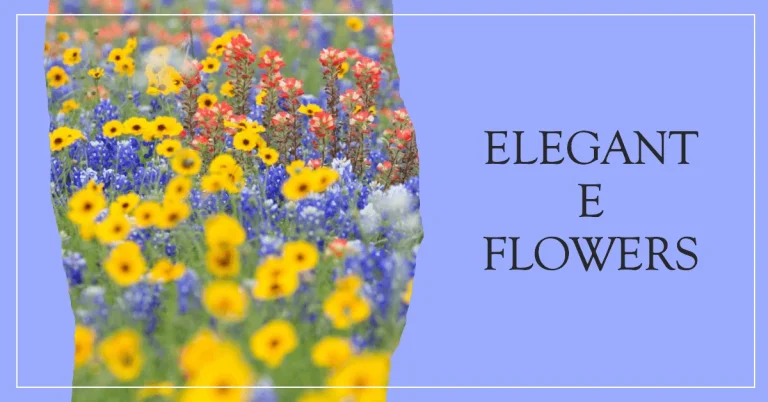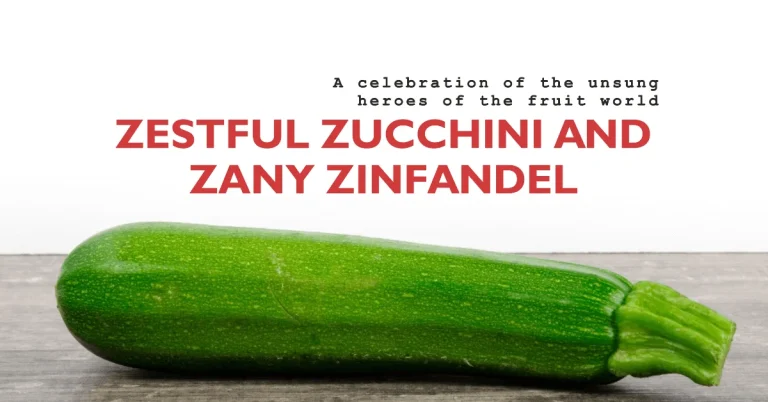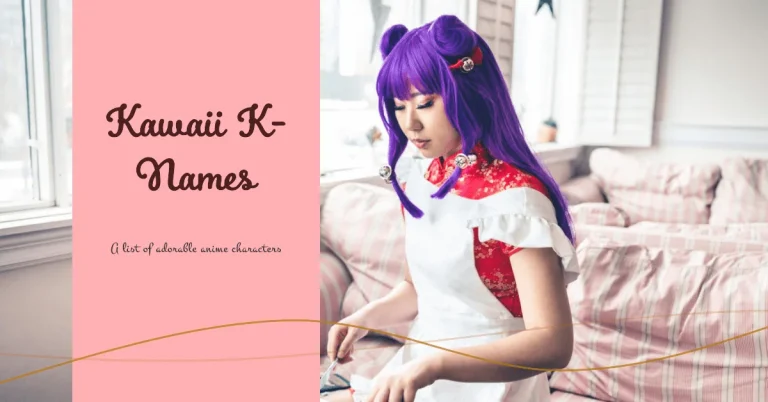75+ Pure Love Flowers that Start with Letter P [ Flower Names ]
Flowers have been an important part of human life for centuries. They are not only aesthetically pleasing but also hold cultural and symbolic meanings. From ancient times to modern days, flowers have always been a symbol of beauty, love, and happiness.
In this comprehensive guide, we will take you on a journey through 70 beautiful flower names that start with the letter P. Let’s explore these amazing flowers and learn some interesting facts about them.

1. Peony
Peonies are known for their large, showy, and fragrant blooms. These flowers come in various shades of pink, white, and red. They are native to Asia but are now popular all around the world.
Fun Fact: Peony flowers are used in traditional Chinese medicine for their healing properties.
2. Poppy
Poppies are vibrant, delicate flowers that come in various colors such as red, orange, yellow, and pink. They have been used to represent remembrance of fallen soldiers since World War I.
Fun Fact: Poppies are the state flower of California.
3. Primrose
Primroses are dainty, bell-shaped flowers that come in shades of pink, purple, and yellow. They are commonly found in temperate regions and have been used in traditional medicine for their medicinal properties.
Fun Fact: In Victorian times, primroses were associated with youth and young love.
4. Protea
Proteas are known for their striking and unique appearance with a mix of vibrant colors. They are native to South Africa but have become popular all around the world.
Fun Fact: Proteas are also called sugarbushes due to the sweet nectar produced by their flowers.
5. Petunia
Petunias are cheerful, trumpet-shaped flowers that come in various shades of pink, purple, and white. They are commonly used as bedding plants and can also be grown in hanging baskets.
Fun Fact: Petunia flowers have a mild fragrance that is most noticeable at night.
6. Pansy
Pansies are small, delicate flowers with velvety petals. They come in a variety of colors such as purple, yellow, and blue. Pansies are popular for their ability to bloom throughout the year.
Fun Fact: Pansy flowers are edible and can be used to add color and flavor to salads or desserts.
7. Passionflower
Passionflowers are exotic, intricate flowers with a deep purple color. They are native to South America and are known for their calming and sedative properties.
Fun Fact: The name passionflower comes from the resemblance of its flower parts to the Passion of Christ.
8. Periwinkle
Periwinkles are small, star-shaped flowers that come in shades of blue, pink, and white. They are commonly used as ground cover plants and are also known for their medicinal properties.
Fun Fact: In Greek mythology, periwinkle was associated with love, fertility, and immortality.
9. Portulaca
Portulacas are colorful, low-growing flowers that come in shades of pink, red, orange, and yellow. They are drought-resistant and can thrive in hot and sunny conditions.
Fun Fact: Portulacas are also known as moss roses due to their resemblance to miniature roses.
10. Phlox
Phlox is a fragrant, star-shaped flower that comes in shades of pink, purple, and white. They are commonly found in meadows and open woodlands.
Fun Fact: Some species of phlox have been used in Native American medicine for their anti-inflammatory properties.
11. Pincushion Flower
Pincushion flowers, also known as scabiosa, are unique and eye-catching flowers with a pincushion-like center. They come in various shades of blue, pink, and white.
Fun Fact: Pincushion flowers are popular among pollinators such as butterflies and bees.
12. Portea
Porteas are tropical, exotic flowers that come in shades of pink, purple, and red. They are native to Brazil and are commonly used as ornamental plants.
Fun Fact: Porteas are named after the Brazilian horticulturist João da Silva Porto.
13. Polyanthus
Polyanthus is a hybrid flower that comes in shades of yellow, orange, and red. They are commonly found in gardens and are known for their vibrant colors.
Fun Fact: Polyanthus flowers have been used in traditional medicine as a pain reliever for thousands of years.
14. Peppermint Geranium
Peppermint geraniums, also known as scented geraniums, are fragrant flowers that come in shades of pink and white. They are commonly used in aromatherapy and for their medicinal properties.
Fun Fact: Peppermint geraniums have a minty fragrance that can help repel mosquitoes.
15. Pyrethrum
Pyrethrum is a daisy-like flower that comes in shades of pink, red, and white. They are commonly used as natural insecticides due to their toxic effects on insects.
Fun Fact: Pyrethrum flowers have been used for centuries in traditional medicine for their anti-inflammatory properties.
16. Pineapple Lily
Pineapple lilies are unique, tropical flowers that come in shades of purple and white. They are commonly found in South Africa and can also be grown as houseplants.
Fun Fact: Pineapple lilies are named after their resemblance to pineapples when they bloom.
17. Pink Fuzzy Bean
Pink fuzzy beans, also known as scarlet runner beans, are climbing flowers with vibrant pink petals. They are commonly used as ornamental plants and can also be eaten as a vegetable.
Fun Fact: Pink fuzzy beans produce edible pods that are similar to green beans.
18. Protea Flower
Protea flowers, also known as sugarbushes, come in various shapes and sizes with vibrant colors such as pink, orange, and red. They are native to South Africa and are known for their long vase life.
Fun Fact: Protea flowers are a popular choice for wedding bouquets due to their unique appearance.
19. Powder Puff
Powder puff flowers, also known as mimosa pudica, are delicate flowers with pink pom-pom-like blooms. They are commonly found in tropical regions and can be grown as houseplants.
Fun Fact: Powder puff flowers are also known as sensitive plants because their leaves close in response to touch.
20. Poinsettia
Poinsettias are iconic, red and green Christmas flowers that come in various shades of red, pink, and white. They are native to Mexico and have been used for traditional medicine by the Aztecs.
Fun Fact: Contrary to popular belief, poinsettias are not toxic to humans or pets.
21. Pincushion Protea
Pincushion proteas, also known as leucospermum, are exotic flowers with vibrant colors and unique textures. They are native to South Africa and have become popular as cut flowers.
Fun Fact: Pincushion proteas are named after their resemblance to a pincushion when they bloom.
22. Primrose
Primroses are delicate, bell-shaped flowers that come in shades of yellow, pink, and white. They are commonly found in woodlands and are known for their medicinal properties.
Fun Fact: Primroses have been used in traditional medicine as a remedy for headaches and nervous disorders.
23. Pampas Grass
Pampas grass is a tall, ornamental grass with feathery plumes that come in shades of pink and white. They are commonly found in South America and are often used as decor.
Fun Fact: Pampas grass can reach up to 10 feet tall and is known for its durability and low maintenance.
24. Purple Coneflower
Purple coneflowers, also known as echinacea, are daisy-like flowers with vibrant purple petals. They are native to North America and have been used in traditional medicine for their immune-boosting properties.
Fun Fact: Purple coneflowers are popular among pollinators such as butterflies and bees.
25. Princess Lily
Princess lilies, also known as alstroemerias, are elegant flowers with vibrant colors and unique markings. They are native to South America and are commonly used in floral arrangements.
Fun Fact: Princess lilies symbolize friendship and devotion, making them a popular choice for gifts.
More Flowers Starting with Letter P:
| S.No | Flower Name | Description |
|---|---|---|
| 1 | Peace Lily | Known for their white, hood-like flowers and glossy green leaves. |
| 2 | Pelargonium (Angel Eyes) | Known for their clusters of small, brightly colored flowers. |
| 3 | Petunia | Known for their trumpet-shaped flowers in a variety of colors. |
| 4 | Pansy | Known for their large, rounded flowers often marked with a distinct pattern. |
| 5 | Poppy | Known for their delicate, papery petals and central seed capsules. |
| 6 | Peony | Known for their large, fragrant, and often double flowers. |
| 7 | Periwinkle | Known for their glossy leaves and star-shaped, blue or white flowers. |
| 8 | Pinks | Known for their small, fringed flowers that are often sweetly scented. |
| 9 | Pogonia | A type of orchid with pink or purple flowers. |
| 10 | Persian Candytuft | Known for their clusters of small, white flowers. |
| 11 | Phlox | Known for their clusters of small, star-shaped flowers in a variety of colors. |
| 12 | Polemonium (Jacob’s Ladder) | Known for their clusters of small, bell-shaped flowers. |
| 13 | Passiflora (Passion Flower) | Known for their complex, tropical-looking flowers. |
| 14 | Pasque Flower | Known for their bell-shaped flowers and feathery foliage. |
| 15 | Penstemon | Known for their spikes of tubular flowers in a variety of colors. |
| 16 | Pineapple Lily | Known for their pineapple-like flower heads and broad, strap-like leaves. |
| 17 | Painted Daisy | Known for their brightly colored, daisy-like flowers. |
| 18 | Pale Purple Coneflower | Known for their drooping, pale purple petals and spiky central cones. |
| 19 | Paper Daisy | Known for their papery petals and daisy-like appearance. |
| 20 | Paperbush Plant | Known for their fragrant, yellow flowers that bloom in winter. |
| 21 | Partridge Pea | Known for their bright yellow flowers and feathery leaves. |
| 22 | Patrinia | Known for their clusters of small, yellow or white flowers. |
| 23 | Paris Daisy | Known for their large, daisy-like flowers with yellow centers and white petals. |
| 24 | Pearly Everlasting | Known for their clusters of small, white, pearl-like flowers. |
| 25 | Peach Blossom | Known for their delicate, pink flowers. |
| 26 | Pearlbush | Known for their clusters of small, white, pearl-like buds that open into star-shaped flowers. |
| 27 | Pellitory | Known for their small, inconspicuous flowers. |
| 28 | Peruvian Lily | Known for their funnel-shaped flowers marked with spots and streaks. |
| 29 | Petunias | Known for their trumpet-shaped flowers in a variety of colors. |
| 30 | Phacelia | Known for their clusters of small, bell-shaped flowers. |
| 31 | Philippine Violet | Known for their clusters of small, violet-like flowers in a variety of colors. |
| 32 | Philadelphus (Mock Orange) | Known for their fragrant, white flowers that resemble orange blossoms. |
| 33 | Phormium (New Zealand Flax) | Known for their sword-like leaves and tall spikes of tubular flowers. |
| 34 | Pickerel Weed | Known for their spikes of small, blue or purple flowers. |
| 35 | Pincushion Flower | Known for their pincushion-like flower heads made up of tiny, tubular flowers. |
| 36 | Pineapple Sage | Known for their tubular, red flowers and pineapple-scented leaves. |
| 37 | Pink Evening Primrose | Known for their cup-shaped, pink flowers that open in the evening. |
| 38 | Pink Lady’s Slipper | A type of orchid known for its large, slipper-shaped flowers. |
| 39 | Pink Muhly Grass | Known for its cloud-like inflorescences of pink flowers. |
| 40 | Pinks (Dianthus) | Known for their small, fringed flowers that are often sweetly scented. |
| 41 | Pipevine | Known for their unique, pipe-shaped flowers. |
| 42 | Pistachio Hydrangea | Known for their large clusters of flowers in a variety of colors. |
| 43 | Pitcher Plant | Known for their pitcher-like structures that trap insects. |
| 44 | Plains Coreopsis | Known for their daisy-like flowers with yellow petals and maroon centers. |
| 45 | Plumeria | Known for their fragrant, tropical-looking flowers. |
| 46 | Poinsettia | Known for their brightly colored bracts that are often mistaken for flowers. |
| 47 | Polka Dot Plant | Known for their spotted leaves in a variety of colors. |
| 48 | Pond Lily | Known for their floating, cup-shaped flowers. |
| 49 | Poplar | Known for their catkin flowers. |
| 50 | Prairie Smoke | Known for their unique, plume-like seed heads. |
| 51 | Primrose | Known for their often brightly colored flowers that bloom in early spring. |
| 52 | Prickly Pear | A type of cactus known for their colorful flowers and edible fruit. |
| 53 | Purple Coneflower | Known for their large, daisy-like flowers with spiky central cones. |
| 54 | Purple Loosestrife | Known for their spikes of small, purple flowers. |
| 55 | Pussy Willow | Known for their soft, fuzzy catkins that appear in early spring. |
| 56 | Pygmy Bitterroot | Known for their small, star-shaped flowers in a variety of colors. |
| 57 | Pyracantha (Firethorn) | Known for their clusters of small, white flowers and bright red berries. |
| 58 | Pyrethrum | Known for their daisy-like flowers. |
| 59 | Pyrola | Known for their small, bell-shaped flowers. |
| 60 | Pyrostegia (Flame Vine) | Known for their clusters of tubular, orange flowers. |
Conclusion:
As you can see, there are many beautiful and unique flower names that start with the letter P. From popular favorites like poinsettias and pampas grass to lesser-known gems like porteas and princess lilies, each of these flowers has its own special qualities and characteristics.
Next time you’re wanting to add some color and beauty to your garden or home, consider planting one of these stunning P flowers. Not only will they add visual appeal, but they may also have interesting historical and medicinal purposes that you can learn more about.





